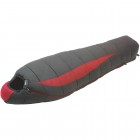WATER
All information contained here is a courtesy of Ready - www.ready.gov
Water is an essential element to survival and a necessary item in an emergency supplies kit. Following a disaster, clean drinking water may not be available. Your regular water source could be cut-off or compromised through contamination. Prepare yourself by building a supply of water that will meet your family’s needs during an emergency.
HOW MUCH WATER DO I NEED?
You should store at least one gallon of water per person per day. A normally active person needs at least one gallon of water daily just for drinking however individual needs vary, depending on age, physical condition, activity, diet and climate.
To determine your water needs, take the following into account:
- One gallon of water per person per day, for drinking and sanitation.
- Children, nursing mothers and sick people may need more water.
- A medical emergency might require additional water.
- If you live in a warm weather climate more water may be necessary. In very hot temperatures, water needs can double.
- Keep at least a three-day supply of water per person.
HOW SHOULD I STORE WATER?
It is recommended you purchase commercially bottled water, in order to prepare the safest and most reliable emergency water supply. Keep bottled water in its original container and do not open until you need to use it. Observe the expiration or “use by” date. Store in cool, dark place.
PREPARING YOUR OWN CONTAINERS OF WATER
It is recommended you purchase food grade water storage containers from surplus or camping supplies stores to use for water storage.
Before filling with water, thoroughly clean the containers with dishwashing soap and water and rinse completely so there is no residual soap.
If you chose to use your own storage containers, choose two-liter plastic soft drink bottles – not plastic jugs or cardboard containers that have had milk or fruit juice in them. Milk protein and fruit sugars cannot be adequately removed from these containers and provide an environment for bacterial growth when water is stored in them. Cardboard containers also leak easily and are not designed for long-term storage of liquids. Also, do not use glass containers, because they can break and are heavy.
STORING WATER IN PLASTIC SODA BOTTLES
Follow these steps for storing water in plastic soda bottles.
Thoroughly clean the bottles with dishwashing soap and water, and rinse completely so there is no residual soap.
Sanitize the bottles by adding a solution of 1 teaspoon of non-scented liquid household chlorine bleach to a quart of water. Mix the sanitizing solution in the bottle so that it touches all surfaces. After sanitizing the bottle, thoroughly rinse out the sanitizing solution with clean water.
Fill the bottle to the top with regular tap water. If the tap water has been commercially treated from a water utility with chlorine, you do not need to add anything else to the water to keep it clean. If the water you are using comes from a well or water source that is not treated with chlorine, add two drops of non-scented liquid household chlorine bleach to the water. Let the water stand for 30 minutes before using.
A slight chlorine odor should be noticeable in the water, if not, add another dose of bleach and allow the water to stand another 15 minutes.
Tightly close the container using the original cap. Be careful not to contaminate the cap by touching the inside of it with your finger. Place a date on the outside of the container so you can know when you filled it. Store in cool, dark place.
Water can also be treated with water purification tablets that can be purchased at most sporting goods stores.
Water that has not been commercially bottled should be replaced every six months.
More information on water treatment is available at RedCross.org.
All information contained here is a courtesy of Ready - www.ready.gov


 Sign Up to Receive Weekly Specials by Email
Sign Up to Receive Weekly Specials by Email
